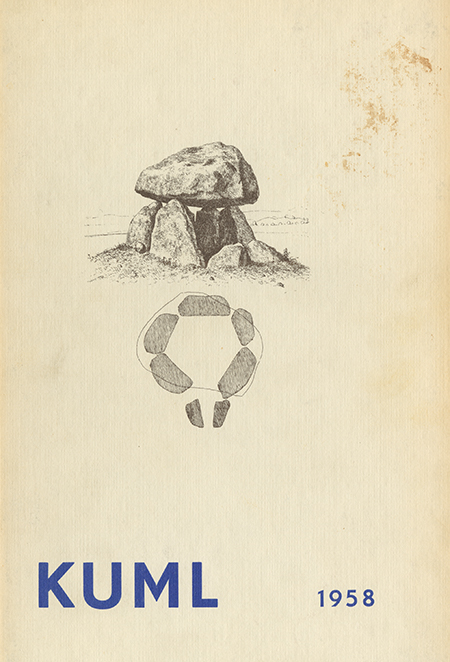Balustersøjlen på Vitskøl
DOI:
https://doi.org/10.7146/kuml.v8i8.102766Keywords:
Schultz, baluster pillar, Vitskøl, Vitskøl abbey, Cistercian, Fonténay plan, Danish granite baluster pillarsAbstract
The Balusterpillar at Vitskøl.
One of the final achievements of C. G. Schultz, the archeologist, was the re-erection of a baluster pillar at Vitskøl on the Liim Fiord north of Viborg.
Vitskøl (Vitæ Scola) Abbey was founded in 1158 by King Valdemar I (The Great) as a Cistercian monastery with monks (from Clairvaux) who had been operating for a short time in Sweden, whence they had withdrawn owing to the unfavourable conditions.
The abbey church at Vitskøl like the cathedral of the diocese in Viborg and most of the early churches in the neighbourhood, seems to have been started as a granite building. Work had, however, not proceeded very far before bricks were taken into use, and the completed church was mainly brick-built.
The abbey was dissolved in 1563 and the abbey church fell into ruins. Excavations begun in the 1890's disclosed the foundations. It was also ascertained that building had originally begun according to a Fonténay plan before the decision to build the ambulatory with the nine apsides had been made.
The excavations revealed fragments of baluster pillars which must have stood upon two bases which were found in situ before the east wall of the eastern part of the ambulatory. Quantities of building material had been removed from the ruins throughout the years and it was not possible to assemble the fragments to form complete pillars. C. G. Schultz succeeded, none the less, in tracing a great deal of the missing material and in piecing together one of the pillars.
The height of the pillar which was thus determined is, naturally, important if a conception of the structure of the east part of the church is to be obtained. The pillar itself testifies to the fact that the interior of the church was by no means so plain as might have been expected of a Cistercian building.
In Denmark baluster pillars are also known from Sjørring and Kobberup churches. All the baluster pillars in Denmark display such common traits that they must have some mutual connection, but the provenience of the form is problematic.
Without authority in any material extant it has been alleged that the predecessors of Danish granite baluster pillars may have been nordic wooden columns. Attention has also been directed to the existence of baluster shafts turned in the lathe or cut in England. It is still open to speculation how the North Jutland baluster pillars got their peculiar form.
Harald Langberg
Downloads
Published
How to Cite
Issue
Section
License
Fra og med årgang 2022 er artikler udgivet i Kuml med en licens fra Creative Commons (CC BY-NC-SA 4.0).
Alle tidligere årgange af tidsskriftet er ikke udgivet med en licens fra Creative Commons.


